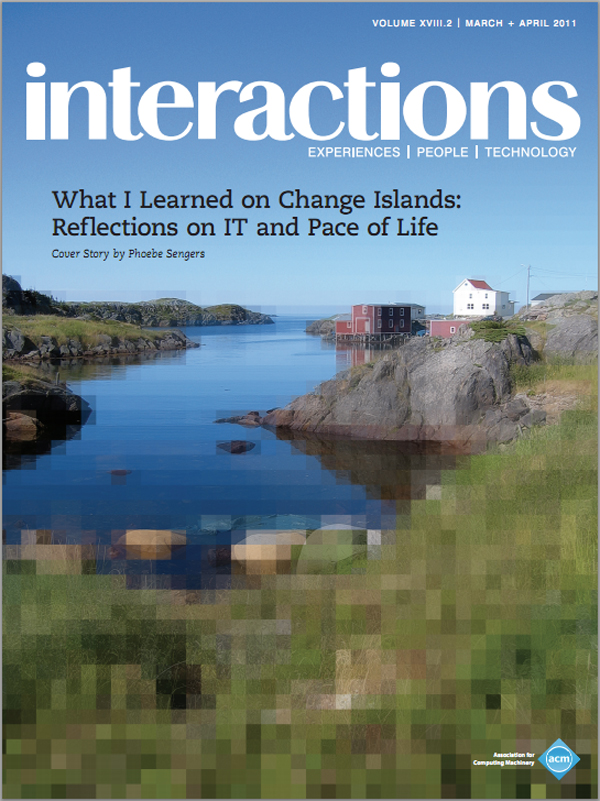Authors:
Steve Portigal, Julie Norvaisas
As practitioners, when we meet with people to conduct contextual research, our focus is driven by our client's business objectives, nominally investigating how our client's products are falling short of people's needs, or how the organization's core capabilities could achieve those business objectives by meeting those needs. Because of this, our work leads us toward what's missing, which we identify as needs or opportunities that provide valuable direction and inspiration for our clients at all points of the development process. Along the way, however, we are inevitably astounded and affected by what exists outside of those explicit constraints. As…
You must be a member of SIGCHI, a subscriber to ACM's Digital Library, or an interactions subscriber to read the full text of this article.
GET ACCESS
Join ACM SIGCHIIn addition to all of the professional benefits of being a SIGCHI member, members get full access to interactions online content and receive the print version of the magazine bimonthly.
Subscribe to the ACM Digital Library
Get access to all interactions content online and the entire archive of ACM publications dating back to 1954. (Please check with your institution to see if it already has a subscription.)
Subscribe to interactions
Get full access to interactions online content and receive the print version of the magazine bimonthly.







Post Comment
No Comments Found